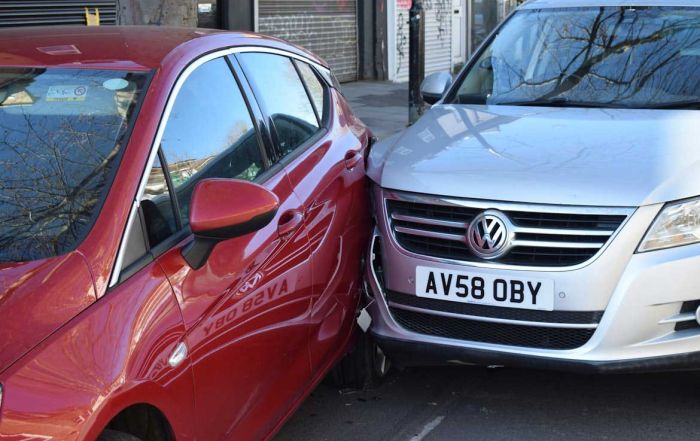
Move Your Soul Safely: Motorcycle Accident Injuries and Safety Recommendations
A famous motorcyclist mantra reads: “Four wheels move the body. Two wheels move the soul”. To many, motorcycling is as calming as it is exciting, but when motorcycle riders are involved in accidents, the resulting injuries can be more than unnerving – they can be catastrophic. In this blog, we discuss common motorcycle injuries and safety recommendations so that you can move your soul as safely as possible.
Motorcyle Accident Injury: Head
The most serious injury arising from a motorcycle accident is one to a rider’s head. These injuries range in severity from concussions (mild traumatic brain injuries) to major brain damage and even death.
Safety Recommendation: Wear a Helmet
This is a no-brainer – literally (if you fail to follow this advice, you’ll likely have little left of your brain in the event of an accident). A helmet is the most important piece of motorcycle riding gear because it can protect you from a serious head injury. In addition, you are required by law to wear a motorcycle helmet. Section 104(1) of the Highway Traffic Act (“HTA”), states that you must not ride a motorcycle or motor assisted bicycle unless:
-
You are wearing a helmet that complies with Regulation 610 of the HTA; and
-
The chin strap of the helmet is securely fastened under your chin.
In accordance with the Ministry of Transportation, your helmet must have a strong chin strap and fastener, and be in good condition. A helmet with cracks, fractures, or other deficiencies will not be effective in an accident. Ensure that you select and wear a helmet that is well constructed, fits closely to your head and is not loose, and has a proper working chin strap. A helmet with a full-face shield provides the best protection.
Motorcyle Accident Injury: Lower Extremities (Legs, Knees, Feet)
The most common motorcycle accident injuries are to a motorcycle rider’s legs, knees, and feet. These types of injuries typically include contusions (bruising), lacerations (cuts), sprains, strains, “road rash” (abrasion to the skin arising from contact with the road surface), dislocation, and fractured or broken bones (hip, tibia, femur, ankle).
Safety Recommendation: Wear Appropriate Pants, Knee Pads, and Boots
Although protective clothing is not guaranteed to prevent injury, it is the best safety measure to help reduce the severity of injuries to the lower extremities. A further benefit of protective clothing is that it reduces the impact of wind, rain, gravel, grit, dust, dirt, and debris. Protective clothing includes:
-
Pants which fit closely and cover your legs completely (even in warm temperatures). According to the Ministry of Transportation, leather offers the best protection and specialized motorcycle riding suits constructed of synthetic materials, like Kevlar, also provide a high degree of protection;
-
Knee Pads worn inside or outside pants; and
-
Boots that are strong, versatile, and sit high enough to protect your ankles. The soles of your riding boots should be constructed of a hard, durable material that will grip the road surface when stopped. Do not wear high heels or shoes with laces or rings which may become entangled in the motorcycle’s controls or engine components.
Motorcyle Accident Injury: Upper Extremities (Arms, Elbows, Wrists), Torso, Spinal
Injuries to a motorcycle rider’s upper extremities, torso, or back typically occur when a rider is thrown from a motorcycle, is caught between the motorcycle and a car, attempts to break a fall, sustains a head injury, or when a rider is underneath the motorcycle as it slides along the road surface. Upper extremity and torso injuries include contusions, lacerations, “road rash”, dislocation, fractured or broken bones (shoulder, elbow, wrist, finger, clavicle, ribs, pelvis), and injuries to internal organs such as lungs and kidneys.
Spinal injuries occur in some or all of the cervical (upper), thoracic (mid), and lumbar (lower) regions of the back. Injuries to the cervical spine range from whiplash (soft-tissue injury) to quadriplegia (complete paralysis from the neck down). Thoracic spine injuries are less common, but can result in paraplegia (paralysis of the legs), loss of sensation, and dysfunction in the bowels and bladder. These last two injuries are also common to the lumbar spine.
Safety Recommendation: Wear a Jacket and Gloves
Like lower extremity injuries, protective clothing is the best way to help avoid or reduce the severity of injuries to your upper extremities, torso, or back/neck. Protective clothing includes:
-
A jacket which fits closely, completely covers your arms, and is made from leather or a strong synthetic material. Almost all motorcycle jackets incorporate shoulder armour and the Ministry of Transportation recommends that you wear a back/neck protector, kidney belt, and body armour inserts for your chest. Do not wear a jacket that has strings, tassels, or loose parts which may become entangled in the motorcycle’s controls or parts.
-
Properly sized gloves provide a better hold on handgrips and controls, and, more importantly, protect your hands from potential injury. When selecting gloves, ensure that they are “gauntlet” style which extend over your wrists, are made from strong leather or synthetic material, and are designed for motorcycle use.






Follow Us